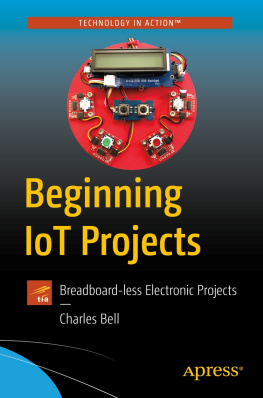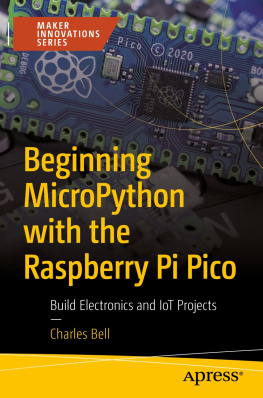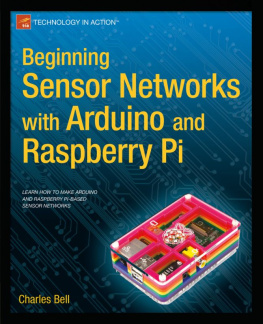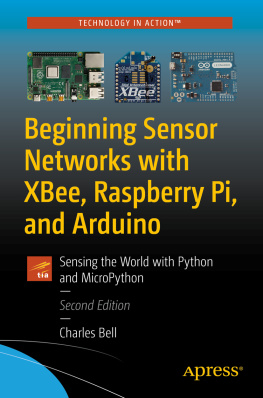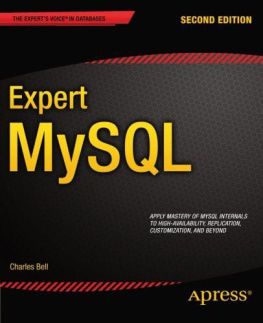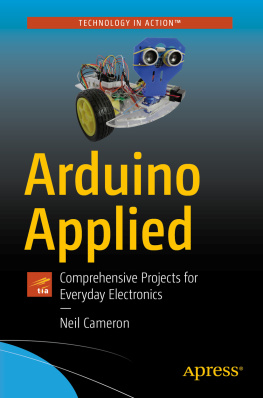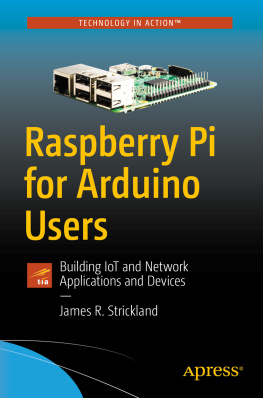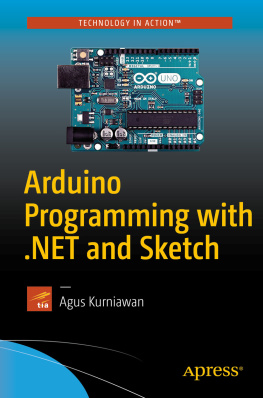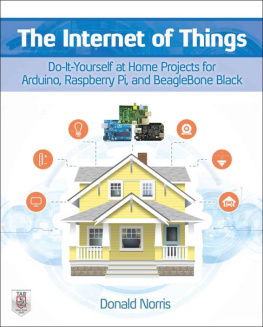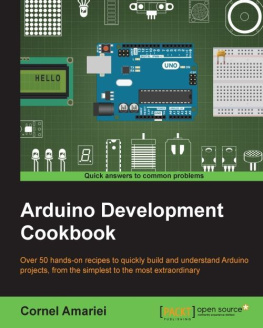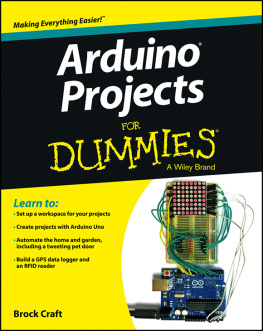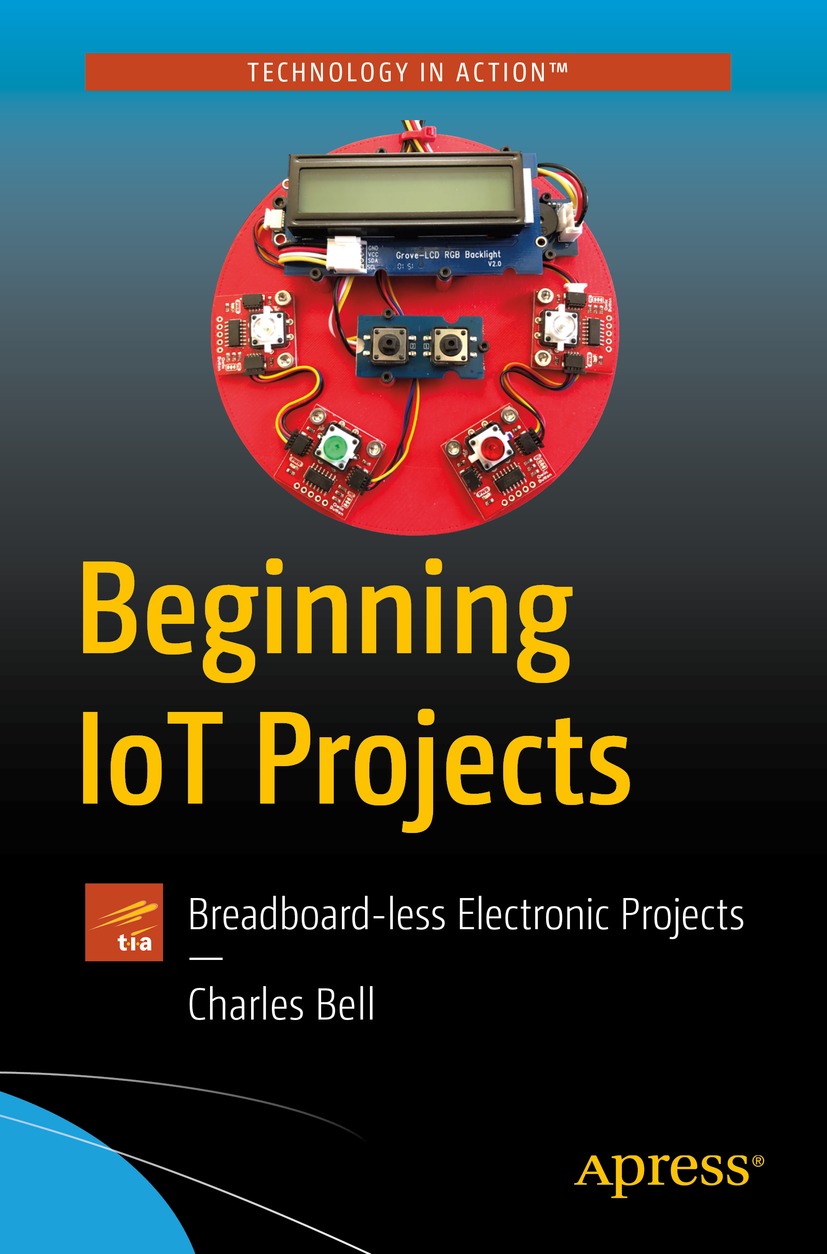Charles Bell
Beginning IoT Projects
Breadboard-less Electronic Projects
1st ed.

Logo of the publisher
Charles Bell
Warsaw, VA, USA
ISBN 978-1-4842-7233-6 e-ISBN 978-1-4842-7234-3
https://doi.org/10.1007/978-1-4842-7234-3
Charles Bell 2021
This work is subject to copyright. All rights are reserved by the Publisher, whether the whole or part of the material is concerned, specifically the rights of translation, reprinting, reuse of illustrations, recitation, broadcasting, reproduction on microfilms or in any other physical way, and transmission or information storage and retrieval, electronic adaptation, computer software, or by similar or dissimilar methodology now known or hereafter developed.
The use of general descriptive names, registered names, trademarks, service marks, etc. in this publication does not imply, even in the absence of a specific statement, that such names are exempt from the relevant protective laws and regulations and therefore free for general use.
The publisher, the authors and the editors are safe to assume that the advice and information in this book are believed to be true and accurate at the date of publication. Neither the publisher nor the authors or the editors give a warranty, expressed or implied, with respect to the material contained herein or for any errors or omissions that may have been made. The publisher remains neutral with regard to jurisdictional claims in published maps and institutional affiliations.
This Apress imprint is published by the registered company APress Media, LLC part of Springer Nature.
The registered company address is: 1 New York Plaza, New York, NY 10004, U.S.A.
Table of Contents
Part I: Getting Started with IoT
Part II: The Qwiic and STEMMA QT Component Systems
Part III: The Grove Component System
Part IV: Going Further: IoT and the Cloud
About the Author
Charles Bell
conducts research in emerging technologies. He is a member of the Oracle MySQL development team and is a principal developer for the MySQL cloud services team. He lives in a small town in rural Virginia with his loving wife. He received his Doctor of Philosophy in Engineering from Virginia Commonwealth University in 2005. Dr. Bell is an expert in the database field and has extensive knowledge and experience in software development and systems engineering. His research interests include 3D printers, microcontrollers, three-dimensional printing, database systems, software engineering, and sensor networks. He spends his limited free time as a practicing maker focusing on microcontroller projects and refinement of three-dimensional printers.
About the Technical Reviewer
Sai Yamanoor
is an embedded systems engineer working for an industrial gases company in Buffalo, NY. His interests, deeply rooted in DIY and open source hardware, include developing gadgets that aid behavior modification. He has published two books with his brother, and in his spare time, he likes to build things that improve quality of life. You can find his project portfolio at http://saiyamanoor.com .
Charles Bell 2021
C. Bell Beginning IoT Projects https://doi.org/10.1007/978-1-4842-7234-3_1
1. Introduction to the Internet of Things
Much has been written about the Internet of Things (IoT). Some sources are more about promoting IoT as their latest innovation (that costs more money); other sources seem to suggest IoT is something everyone needs or be left behind in the dust of antiquity.
Fortunately, books and similar media avoid the sales pitch to expand on the science and technology for implementing and managing the data for IoT, while other texts concentrate on the future or the inevitable evolution of our society as we become more connected to the world around us each and every day. However, you need not dive into such tomes or be able to recite rhetoric to get started with the IoT. In fact, through the efforts of many companies, you can explore the IoT without intensive training or expensive hardware and software.
However, most publications That is, until now.
In this book, we will explore how to build IoT solutions using a series of basic projects without the need to learn the difference between a diode and a resistor . In fact, we will be using two modular platforms that you can connect to your host board without the need to wire anything together! This is accomplished by using a special adapter board/shield for your device that permits you to connect to modules that include sensors, displays, switches, and more!
However, before we get into the details of devices, boards, modules, etc., lets take a moment and learn what the Internet of Things is and what sort of solutions are classified as IoT projects.
What Is the Internet of Things?
So what is this IoT? While it is true that the IoT employs technology and techniques that already exist, the way they are employed, coupled with the ability to access the solution from anywhere in the world, makes the IoT an exciting concept to explore. Now lets discuss what the IoT is.
The essence of the IoT is simply interconnected devices that generate and exchange data from observations, facts, and other data, making it available to anyone youd like only yourself or immediate family or share it with the world. While there seem to be some marketing efforts attempting to make anything connected to the Internet an IoT solution or device (not unlike the shameless labeling of everything cloud), IoT solutions are designed to make our knowledge of the world around us timelier and more relevant by making it possible to get data about anything from anywhere at any time.
As you can imagine, if we were to connect every device around us to the Internet and make sensory data available for those devices, it is clear there would be potential for the number of IoT devices to exceed the human population of the planet and for the data generated to rapidly exceed the capabilities of all but the most sophisticated database systems. These concepts are commonly known as addressability and big data, which are two of the most active and debated topics in IoT. But dont worry about these terms I mention them here for completeness and possibly to pique your interest. You can read more about these issues at your leisure.
However, the IoT is all about understanding the world around us. That is, we can leverage the data to make our world and our understanding of it better.
Before we proceed, lets review some terms that can help us understand the context and subject better. The following are the major terms used in this book:

